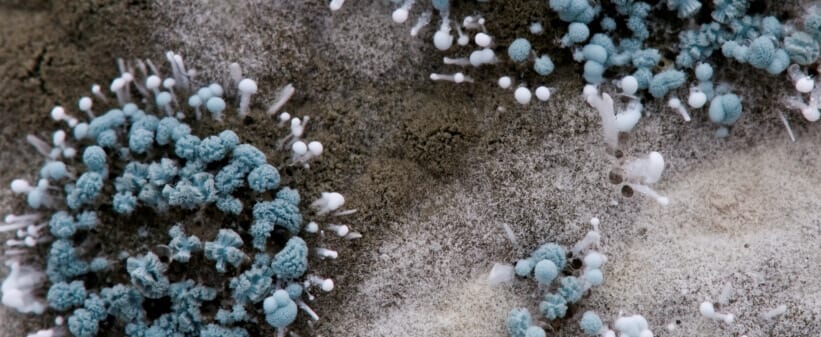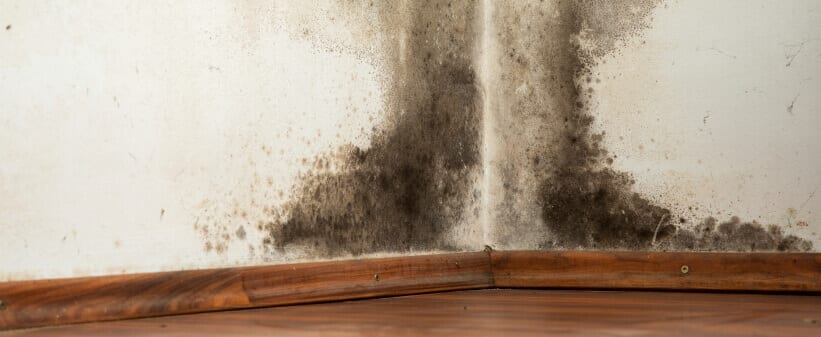Secure RestorationBlack Mold
Mold is a type of fungus that is ubiquitous outdoors and an important part of the ecosystem. Indoors, however, it can not only be unsightly but also be seriously damaging for your health and potentially even fatal.
What many people don’t realize however is that there is not one type of mold but actually many. Of these, not all mold is equal and some types present much more of a potential health risk than others.
- 24/7 Emergency Service
- 10+ Years of Experience
- Licensed & Insured in NC and SC
- We work with all Insurance Companies
- IICRC Certified
- Accredited by the Better Business Bureau
- Free Damage Assessment
Black Mold
Of all types of mold, black mold is potentially the most serious and the most dangerous. Here we will look at what makes black mold such a problem, where it comes from and what you can do to prevent it.
 Before we look at black mold specifically, we should first look at what mold is generally.
Before we look at black mold specifically, we should first look at what mold is generally.
As mentioned, mold is a type of fungus. You can spot it in your home relatively easily as it will often take the form of a green, blue or black ‘fur’ that collects on your surfaces. It’s rather unsightly and is similar to the mold you might find on fruit or vegetables.
Mold spreads quickly and easily because it can travel through the air in the form of spores. When these spores come into contact with any damp surface, they will then begin to grow there forming a ‘colony’ in as little as 24 hours. This makes it very difficult to prevent mold from spreading.
Mold of any kind is bad for your health and when inhaled can cause allergic reactions. The body will react to inhaled mold spores in a similar way to dander or hayfever for those with allergies – this means inflammation in the throat, a running nose, coughing, sneezing and running eyes. This can damage sleep which is also bad for you.
Many people don’t realize that there are different kinds of mold. In fact, though, the precise type of mold varies greatly from case to case and home to home and you will probably have multiple types of mold in your house any given time. ‘Ulocladium’ for instance is a type of mold that requires a lot of water and grows in homes that have had bad water damage – perhaps as a result of a flood. Meanwhile, serpula lacrymans is a type of mold that appears yellow and which grows on wood. Sometimes this type of mold is called ‘dry rot’.
- Black mold is more technically known as ‘Stachybotrys chartarum’. It also goes by the name of ‘toxic mold’ which is owing to its particularly poisonous nature.
- Black mold itself isn’t any more toxic than other molds but it produces a lot of mycotoxins. These are poisonous to humans and cause a number of serious problems. Not only do mycotoxins produce many similar allergic reactions but they also cause more serious issues. Those who have been in the presence of black mold for extended periods can end up suffering chronic sinus conditions, fatigue, and depression. What’s more this type of mold may exacerbate or even cause asthma or eczema. Black mold can be even more dangerous than that too and in some cases, it can cause neurological damage and even death.
- Black mold is of course black in color but it is also distinct for having a rather slimy and ‘sludge-like’ texture to touch. On top of this, it also has a particularly characteristic musty odor so if you smell musty dampness in your home, this is a sign that you may need mold remediation. You should also look out for this smell whenever you are inspecting potential new properties to buy or move into.
- Black mold will often live in areas that are constantly damp. This means it will grow in air conditioning ducts, around leaky pipes and in other places badly affected by water damage. Another common risk factor is having a flat roof. A good flat roof should utilize a somewhat convex design which exists to redirect water off of it and into the gutters where it will be disposed of. Some flat roofs, however, can end up being weighed down by water and debris over time or may experience ‘ice dams’ forming in winter. This allows water to pool there and to sit for long periods of time, seeping into the ceiling and providing ample nourishment for black mold.
Secure Restoration Provides Free Damage Assessment
 If you notice black colored mold in your home then you should deal with this as soon as possible. Any type of mold, in fact, should be addressed to prevent it from spreading and to avoid negative health effects – but black mold, in particular, needs to be addressed quickly.
If you notice black colored mold in your home then you should deal with this as soon as possible. Any type of mold, in fact, should be addressed to prevent it from spreading and to avoid negative health effects – but black mold, in particular, needs to be addressed quickly.
If you spot black mold in your home then you should clean it in a careful manner so as to prevent displacing it and adding more mold spores to the air. Some surfaces that are porous in nature will be impossible to completely clean and should be disposed of.
For even more information on black mold symptoms & health effects check out this article.
If you have extensive mold of any sort, then calling mold remediation companies is normally the best course of action. This is recommend by EPA (environmental protection agency) and is the best way to ensure your home is safe to live in. These companies will use detection methods to first identify and locate the source of any moisture and the cause of mold and will then use industrial cleaning tools to dry and thoroughly clean the area. They may also offer some restoration services such as carpet installation, fabric restoration, odor removal and more to ensure that your home is safe to live in again.
We work with your insurance
Call us today to schedule your Free Damage Assessment with a professional mold remediation team from Secure Restoration. We are your mold remediation experts serving the Asheville, Hendersonville, Black Mountain, Canton, Candler, Tryon, Brevard, Waynesville, Sylva, Burnsville, Marion, North Carolina areas and Greenville, Spartanburg, Travellers Rest, Greer, Inman, Union, South Carolina areas.
Locally Owned and Operated




